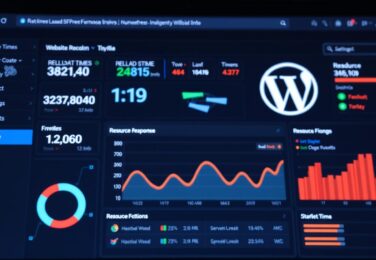How to Maintain WordPress Plugins: Essential Tips and Tricks

Table of Content
Are you a WordPress user who relies on plugins to enhance the functionality of your website? If so, you likely understand the importance of keeping these plugins up to date. WordPress plugin updates not only provide new features and bug fixes, but they also ensure compatibility with the latest version of WordPress.
However, maintaining plugins can sometimes feel like a daunting task. With a constantly evolving landscape of plugins and frameworks, it can be challenging to stay on top of updates and ensure smooth operation of your website.
In this article, we will explore some essential tips and tricks for maintaining WordPress plugins and keeping your website running smoothly. From understanding the importance of plugin updates to managing framework updates and general WordPress maintenance, we will provide you with the knowledge and tools you need to optimize your website’s performance. So, let’s dive in and discover how to effectively maintain your WordPress plugins!
Importance of Regular Updates for WordPress Plugins
Keeping your WordPress plugins up to date is essential for the smooth operation of your website. Regular updates not only enhance the functionality of your plugins but also improve the security and compatibility of your website. In this article, we will discuss the importance of regularly updating your WordPress plugins and provide tips on how to maintain them effectively.
First and foremost, updating your WordPress plugins ensures that you are utilizing the latest features and improvements. Plugin developers are constantly working to enhance their products and fix any bugs that may occur. By updating your plugins, you can take advantage of these updates and make your website more efficient and user-friendly.
Furthermore, updating your plugins is crucial for maintaining the security of your website. Outdated plugins can be a magnet for hackers and cyber-attacks. Developers consistently release security patches and bug fixes to address any vulnerabilities in their plugins. By neglecting updates, you are leaving your website exposed to potential security breaches. Regularly updating your WordPress plugins is a proactive measure to protect your website and maintain its integrity.
To effectively maintain your WordPress plugins, follow these simple steps. Firstly, always backup your website before updating plugins. This way, if any issues arise during the update process, you can easily restore your website to its previous state. Secondly, regularly check for plugin updates and stay informed about new features and security fixes. Most plugins provide update notifications within your WordPress dashboard. Lastly, ensure that your plugins are compatible with the current version of WordPress. Outdated plugins may not work correctly or cause conflicts with the latest version of WordPress, so always check compatibility before updating.
In conclusion, the importance of regular updates for WordPress plugins cannot be stressed enough. Updates improve functionality, enhance security, and keep your website running smoothly. By incorporating these tips into your maintenance routine, you can maintain the health and performance of your WordPress plugins effectively. So, don’t forget to update your plugins regularly and enjoy the benefits it brings to your website.
Troubleshooting Common Issues with WordPress Plugins
WordPress plugins are a great way to add functionality and enhance the features of your website without having to write code from scratch. However, like any software, plugins can sometimes cause issues that can disrupt the performance of your website. In this article, we will discuss some common issues with WordPress plugins and how to troubleshoot them.
One common issue that users encounter is plugin conflicts. This occurs when two or more plugins have different scripts or stylesheets that conflict with each other, resulting in a broken layout or functionality. To troubleshoot this issue, you can deactivate all your plugins and then reactivate them one by one to see which one is causing the conflict. Alternatively, you can use a plugin like Plugin Detective, which helps identify conflicting plugins and troubleshoot the issue.
Another common issue is outdated plugins. WordPress regularly releases updates to address security vulnerabilities and improve performance. If you are using outdated plugins, they may not be compatible with the latest version of WordPress, which can lead to errors. To maintain your WordPress plugins, make sure to regularly check for updates and install them promptly. If a plugin becomes incompatible with the latest version of WordPress, you may need to find an alternative plugin or contact the plugin developer for an updated version.
Lastly, a common issue with WordPress plugins is performance degradation. Some plugins may slow down your website, causing longer load times and a poor user experience. To troubleshoot this issue, you can use a plugin like P3 (Plugin Performance Profiler) to identify which plugins are using the most resources and causing the slowdown. Consider deactivating unnecessary plugins or finding alternative lightweight plugins to improve your website’s performance.
In conclusion, while WordPress plugins add functionality to your website, they can also cause issues that need troubleshooting. By being proactive in maintaining your plugins, checking for conflicts, updating outdated plugins, and optimizing performance, you can ensure a smoother experience for your website visitors and prevent any potential issues that might arise.
Best Practices for Monitoring Plugin Performance
WordPress plugins are a valuable tool for enhancing the functionality and customization of a website. However, it is critical to monitor their performance to ensure the smooth running of your site. In this article, we will discuss some best practices for monitoring plugin performance and maintaining your WordPress plugins.
Firstly, regularly update your plugins to their latest versions. Developers often release updates to fix bugs, improve security, and enhance performance. By keeping your plugins up to date, you can benefit from these improvements and ensure compatibility with the latest WordPress version.
Another best practice is to install a plugin monitoring tool. These tools provide insights into various performance metrics of your plugins, such as page load time, memory usage, and database queries. By monitoring these metrics, you can identify any plugins that are causing performance issues and take necessary actions, such as disabling or replacing them.
It is also essential to avoid installing too many plugins on your WordPress site. While plugins add functionality, installing too many can lead to slower load times and increased resource usage. Only use the plugins that are necessary for your site’s goals and regularly review and remove any plugins that are no longer needed.
In conclusion, monitoring plugin performance is crucial to maintaining a high-performing WordPress site. By following these best practices, such as keeping plugins updated, using monitoring tools, and limiting the number of installed plugins, you can ensure the smooth functioning of your website and provide a better user experience.
Understanding Plugin Compatibility with WordPress Versions
WordPress is a widely-used platform for building websites, and one of the reasons for its popularity is the vast number of plugins available. These plugins extend the functionality of a WordPress site, allowing users to add features and customize their websites in various ways. However, as WordPress evolves, so does its compatibility with plugins. It is crucial for website owners to understand plugin compatibility with different versions of WordPress to ensure their sites run smoothly and securely.
To maintain WordPress plugins effectively, it is important to keep both WordPress and the plugins updated to their latest versions. Developers constantly release updates to improve security, fix bugs, and add new features. These updates are often aimed at specific versions of WordPress, and using outdated plugins on the latest version of WordPress may result in compatibility issues or even security vulnerabilities. Therefore, regularly updating plugins and WordPress itself is key to maintaining a stable and secure website.
In addition to keeping everything up to date, it is essential to research the compatibility of plugins with specific versions of WordPress before installing or updating them. Most plugins indicate the minimum required WordPress version for proper functioning. Checking this information ensures that the plugin will work without any issues on your WordPress site. Moreover, it is a good practice to read user reviews and ratings to get an idea of how well the plugin works with the latest version of WordPress.
In conclusion, understanding plugin compatibility with different versions of WordPress is essential for maintaining a WordPress website. Regularly updating both WordPress and plugins is crucial to ensure security, stability, and access to new features. Researching the compatibility of plugins and checking user reviews will help ensure that plugins work seamlessly with the chosen version of WordPress. By following these guidelines, website owners can maintain a smooth-running WordPress site that meets their needs and expectations.
Ensuring Plugin Security: Key Steps to Follow
WordPress plugins are a powerful tool that can enhance the functionality of your website. However, it is important to ensure the security of these plugins to protect your website from potential threats. Here are some key steps to follow to maintain the security of your WordPress plugins.
Firstly, always keep your plugins updated. Developers regularly release updates to fix bugs and security vulnerabilities. By keeping your plugins updated, you ensure that you have the latest security patches installed. Set up automatic updates if possible, or regularly check for updates manually.
Secondly, be cautious when choosing plugins. Only download plugins from reputable sources such as the official WordPress repository or trusted developers. Read reviews and check for the number of active installations and the last update date. This will help you identify plugins that are regularly maintained and have good security practices.
Thirdly, regularly monitor for security vulnerabilities. Install a security plugin to scan your plugins and identify any potential risks. These plugins can also help you set up firewalls and implement additional security measures. Be proactive and keep an eye on any security advisories or vulnerabilities related to the plugins you use.
Lastly, remove any unused or outdated plugins. Unused plugins are a potential security risk as they may contain vulnerabilities that go unpatched. Clean up your plugin list regularly and delete any plugins that are no longer needed. Additionally, delete any outdated plugins as they may no longer receive updates, leaving them vulnerable to attacks.
By following these key steps, you can ensure the security of your WordPress plugins and protect your website from potential threats. Regularly updating, choosing reputable plugins, monitoring vulnerabilities, and removing unused or outdated plugins are crucial for maintaining a secure website. Don’t overlook the security of your plugins and prioritize the safety of your website and its visitors.
Backup Strategies for Safeguarding Your WordPress Plugins
In the world of WordPress, plugins are like little magical tools that enhance the functionality of your website. They add features, improve performance, and make your work easier. But what happens if something goes wrong? What if your plugins crash or get corrupted? That’s where backup strategies come into play.
Maintaining your WordPress plugins is crucial for the smooth operation of your website. One of the best ways to ensure the safety of your plugins is by regularly backing them up. This means creating duplicate copies of your plugins and storing them in a secure location. By doing so, you have a safety net to fall back on in case of any mishaps.
There are various backup strategies you can use to safeguard your WordPress plugins. One option is to manually backup your plugins by downloading the plugin files and storing them on an external device or cloud storage. However, this method can be time-consuming, especially if you have multiple plugins installed.
Another option is to use plugin-specific backup solutions. Many WordPress plugins offer built-in backup functionalities that allow you to create backups directly from the plugin’s settings. This can be a convenient and efficient way to ensure the safety of your plugins without relying on external tools or services.
In addition to regular backups, it’s essential to keep your plugins up to date. Plugin developers often release updates to fix bugs, improve security, and add new features. By keeping your plugins updated, you reduce the risk of incompatibility issues and vulnerabilities that can be exploited by hackers. However, before updating, always make sure to create a backup in case something unexpected happens.
In conclusion, maintaining your WordPress plugins requires a proactive approach to ensure a smooth and secure website. Implementing a backup strategy is crucial for safeguarding your plugins and being prepared for any unforeseen circumstances. By regularly backing up your plugins and keeping them up to date, you can enjoy the benefits of a properly functioning website and minimize the risks associated with plugin-related issues.
Utilizing WordPress Plugin Management Tools Effectively
WordPress is a popular content management system that powers millions of websites worldwide. One of the reasons for its popularity is the vast array of plugins available, which extend the functionality of a WordPress site. However, with so many plugins to choose from, it can become challenging to manage them effectively. That’s where WordPress plugin management tools come in.
These tools help website owners to maintain their WordPress plugins efficiently. They provide features like automatic updates, plugin backups, and compatibility checks. By utilizing these tools, users can ensure that their plugins are always up to date and compatible with the latest version of WordPress.
One essential aspect of managing WordPress plugins is regularly checking for updates. Plugin updates often include bug fixes and security patches, so it’s crucial to stay on top of them. With the help of a plugin management tool, users can schedule automatic updates, saving them time and effort.
Another useful feature of these tools is the ability to create backups of plugins. Backing up your plugins ensures that you can easily restore them in case anything goes wrong during an update or if you need to roll back to a previous version.
In conclusion, effectively managing WordPress plugins is essential to maintain the security and functionality of your website. By using plugin management tools, users can automate tasks like updates and backups, saving them time and reducing the risk of plugin-related issues. So, if you’re a WordPress user, make sure to take advantage of these tools to make your plugin management experience smoother and stress-free.
Collaborating with Plugin Developers for Optimal Maintenance
WordPress plugins are an essential element of any website powered by this popular Content Management System (CMS). However, installing and managing multiple plugins can become overwhelming and potentially lead to conflicts and performance issues. That’s where WordPress plugin management tools come in handy. With these tools, you can effectively maintain your plugins, ensuring they are updated, optimized, and secure.
One of the primary benefits of utilizing WordPress plugin management tools is the ability to keep all your plugins up to date. Outdated plugins can pose a significant security risk, as hackers often target vulnerabilities found in outdated versions. With these tools, you can easily view and update all your plugins from a central dashboard, ensuring you have the latest versions running on your website.
In addition to keeping your plugins updated, these management tools allow you to optimize their performance. Some plugins may slow down your website, affecting its loading speed and user experience. By regularly monitoring and optimizing your plugins, you can identify any performance issues and take the necessary steps to improve your site’s speed and functionality.
Furthermore, plugin management tools provide a layer of security for your website. They can detect any vulnerabilities in your plugins and notify you about potential risks. Taking immediate action to address these issues can prevent potential hacks or data breaches. Additionally, you can schedule automated backups of your plugins and easily restore them if any conflicts or errors occur during updates.
In conclusion, maintaining your WordPress plugins is crucial for ensuring the security and performance of your website. By utilizing plugin management tools effectively, you can easily keep all your plugins up to date, optimize their performance, and enhance the security of your site. Embracing these tools will simplify the management process and allow you to focus on delivering a seamless user experience to your visitors.
Testing and QA Processes for Reliable Plugin Functionality
Testing and QA Processes for Reliable Plugin Functionality
WordPress plugins are a vital component for enhancing the functionality of a website. They provide added features and can greatly improve the user experience. However, it is crucial to ensure that these plugins are reliable and function as intended. This is where testing and quality assurance (QA) processes come into play.
To maintain WordPress plugins, there are several steps that should be followed. Firstly, it is essential to perform thorough testing before deploying a plugin on a live site. This includes testing its compatibility with different versions of WordPress, as well as checking for any conflicts with other plugins or themes. By doing so, developers can identify and resolve any issues before they impact the performance of the website.
Another important aspect of maintaining WordPress plugins is regular updates and bug fixes. Staying up-to-date with the latest version of a plugin ensures that it is secure and optimized for performance. Developers should regularly check for updates from plugin developers and implement them promptly. Additionally, if any bugs are discovered, they should be reported to the developers so that they can be addressed in future updates.
Furthermore, engaging in continuous QA is crucial for reliable plugin functionality. This involves conducting various tests, such as functional testing, performance testing, and security testing. Functional testing ensures that all the features and functionalities of a plugin are working as expected. Performance testing focuses on assessing the speed and efficiency of the plugin. Lastly, security testing helps identify any vulnerabilities that could compromise the integrity of the website.
In conclusion, testing and QA processes are vital for maintaining reliable WordPress plugins. By performing thorough testing before deployment, regularly updating plugins, and engaging in continuous QA practices, developers can ensure that their plugins function properly and provide a positive experience for users. Implementing these processes will not only enhance the performance and security of the website but also contribute to the overall success of the business.
Conclusion: Mastering the Art of WordPress Plugin Maintenance
In the world of website development and management, WordPress has become the go-to platform for countless businesses, bloggers, and individuals alike. One of the key reasons for WordPress’s popularity is its vast library of plugins, allowing users to add functionality and features to their websites with ease. However, with great power comes great responsibility, and maintaining WordPress plugins is crucial for the smooth functioning of a website.
So, how to maintain WordPress plugins to ensure optimal performance? First and foremost, it’s essential to keep the plugins updated. Plugin developers regularly release updates to fix bugs, enhance security, and introduce new features. By regularly updating your plugins, you not only stay ahead of any potential security vulnerabilities but also benefit from the latest improvements.
Another important aspect of plugin maintenance is monitoring their compatibility with your WordPress version. As WordPress frequently releases updates, you need to ensure that your installed plugins are compatible with the latest version. A simple way to check for compatibility is by visiting the plugin’s page in the WordPress Plugin Directory or contacting the plugin developer directly.
Lastly, be mindful of plugin conflicts. Sometimes, two plugins may not work well together, leading to undesirable effects on your website’s performance. To avoid this, thoroughly test each plugin after installation, particularly if you plan to use multiple plugins simultaneously. Keeping an eye on your website’s performance and promptly addressing any issues caused by conflicting plugins will save you from potential headaches.
In conclusion, mastering the art of WordPress plugin maintenance is vital for the smooth operation of your website. By keeping your plugins updated, monitoring compatibility, and addressing conflicts, you’ll ensure optimal performance and deliver an exceptional user experience. So, don’t neglect your plugins, invest the necessary time and effort into their maintenance, and enjoy the benefits of a seamlessly running WordPress website.










